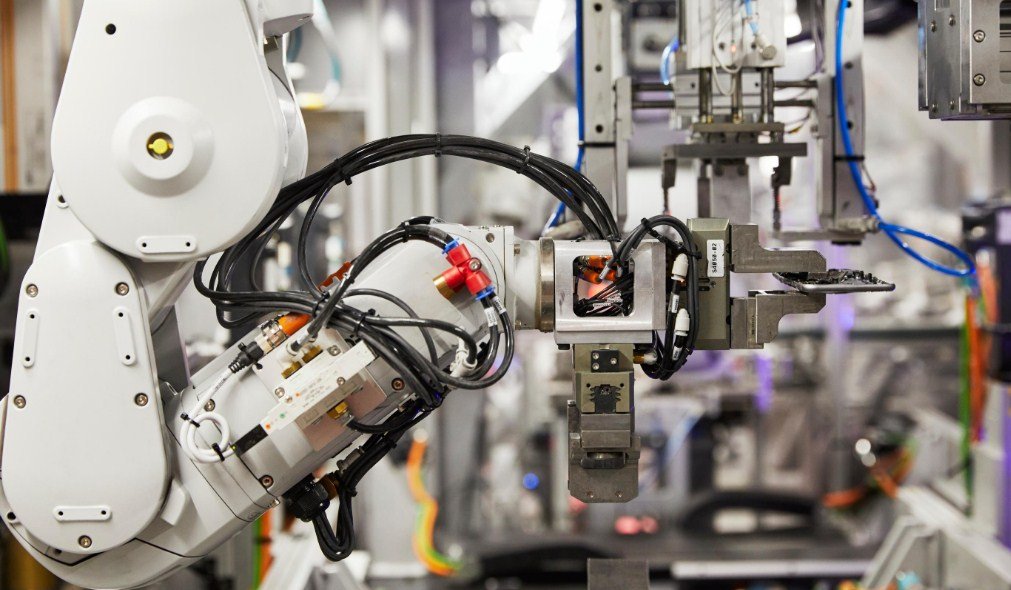Apple’s recycling robot, Daisy, is making headlines for its ability to dismantle millions of iPhones and recover precious materials that can be reused or recycled. The robot is part of Apple’s efforts to reduce its environmental impact and create a circular economy for its products.
What is Daisy and how does it work?
Daisy is a sophisticated robot that can disassemble 23 different models of iPhone in a matter of minutes. It can process up to 200 devices per hour, separating components such as the display, battery, screws, and logic board. Daisy uses a combination of sensors, cameras, magnets, and suction cups to identify and extract the parts with precision and speed.
The robot is located in Breda, the Netherlands, where Apple has a recycling facility. The facility receives iPhones from customers who trade in or return their old devices through Apple’s GiveBack program. The customers can either get credit towards a new purchase or donate the value to an environmental charity.
Daisy is not the first recycling robot that Apple has developed. In 2016, the company introduced Liam, a robot that could disassemble 1.2 million iPhones per year. However, Daisy is more advanced and efficient than Liam, as it can handle more models and recover more materials.
Why is Daisy important for the environment?
Daisy is part of Apple’s vision to create a closed-loop supply chain, where products are made using only renewable or recycled materials. This would reduce the need for mining and extracting finite resources from the earth, which can have negative impacts on the environment and human rights.
According to Apple’s Environmental Progress Report 2023, Daisy can recover an average of 14.7 kilograms of steel, 190 grams of aluminum, 80 grams of copper, 7.5 grams of tin, 1.7 grams of cobalt, 0.97 grams of gold, 0.37 grams of silver, and 0.11 grams of palladium from every 100 iPhones. These materials can be reused in new products or sold to other industries.
Apple claims that recycling one million iPhones through Daisy can save enough energy to power over 6,000 homes for a year. It can also prevent the emission of 1.9 million kilograms of carbon dioxide equivalent, which is equivalent to taking 400 cars off the road for a year.
What are the challenges and opportunities for Daisy?
Daisy is not without its challenges and limitations. For one thing, it can only process iPhones, not other Apple products or devices from other brands. It also cannot recover all the materials from an iPhone, such as plastics and glass. Moreover, it depends on the availability and quality of the devices that are returned by customers, which may vary depending on consumer behavior and preferences.
However, Daisy also offers opportunities for innovation and collaboration. Apple has announced that it will share some of the patents related to Daisy with researchers and companies who are working on similar disassembly technologies. This could help improve the efficiency and scalability of e-waste recycling and create new solutions for other products.
Apple also works with partners such as Sims Recycling Solutions and TES-AMM to ensure that the materials recovered by Daisy are handled responsibly and securely. The company follows strict standards and audits to prevent any leakage or misuse of the materials.
How can you meet Daisy and support e-waste recycling?
If you are curious about Daisy and want to see it in action, you can watch a behind-the-scenes video by YouTube technology reviewer Sara Dietschy. She visited the Breda facility and met with Apple’s environmental team to learn more about Daisy and its impact.
You can also support e-waste recycling by participating in Apple’s GiveBack program. You can trade in or return your old iPhone or other Apple device online or at any Apple Store. You will either get credit towards a new purchase or donate the value to an environmental charity of your choice.
By doing so, you will not only help reduce your own environmental footprint, but also contribute to Apple’s goal of becoming carbon neutral by 2030. As Apple’s CEO Tim Cook said in a statement, “We have a generational opportunity to help build a greener and more equitable future.”

